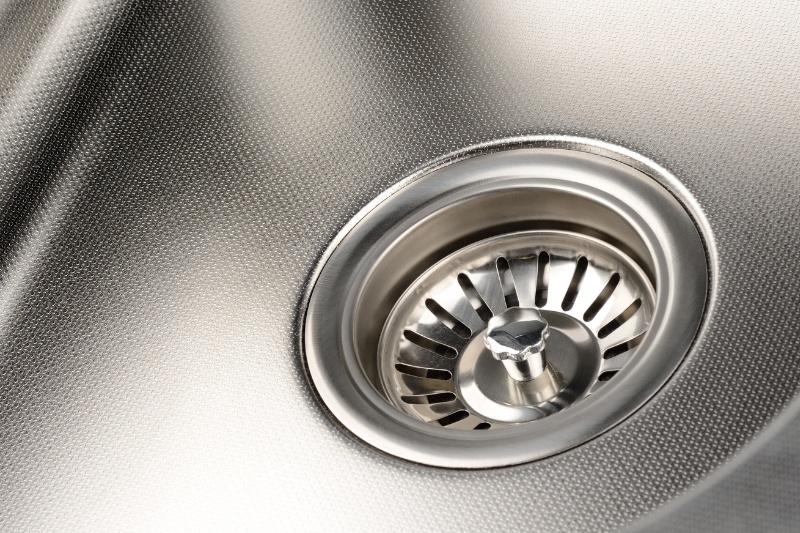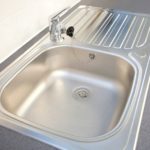Welcome to our guide on maintaining the heart of your kitchen or bathroom—the sink drain.
Often overlooked yet integral to a smooth-running household, a functional sink drain ensures proper hygiene, prevents unwelcome clogs, and limits foul odours.
Here we teach you how to clean a sink drain, ensuring you can effortlessly tackle this essential maintenance task.
Whether you’re a seasoned home improvement enthusiast or a newcomer to household upkeep, here is everything you need to keep your sink drain flowing freely.
Say goodbye to pooling water, foul smells, and pesky blockages for good!
How Do You Clean a Bathroom Sink Drain?

Many common culprits can lead to a clogged bathroom sink drain. Hair and skin are two of the primary causes.
Soap residue, minerals, and dirt can also combine to create a sticky substance known as soap scum, whereas hard water contains minerals that can accumulate in the pipes over time.
You must effectively cut through all these substances when cleaning a bathroom drain.
Cleaning a sink drain in your bathroom therefore might seem like a daunting task, but it can be relatively straightforward—if you have the right materials and method.
Follow the guide below for effortless yet effective results.
Materials you’ll need for cleaning a bathroom drain
- Rubber gloves
- Bicarbonate of soda
- White vinegar
- Boiling water
- Wire coat ganger
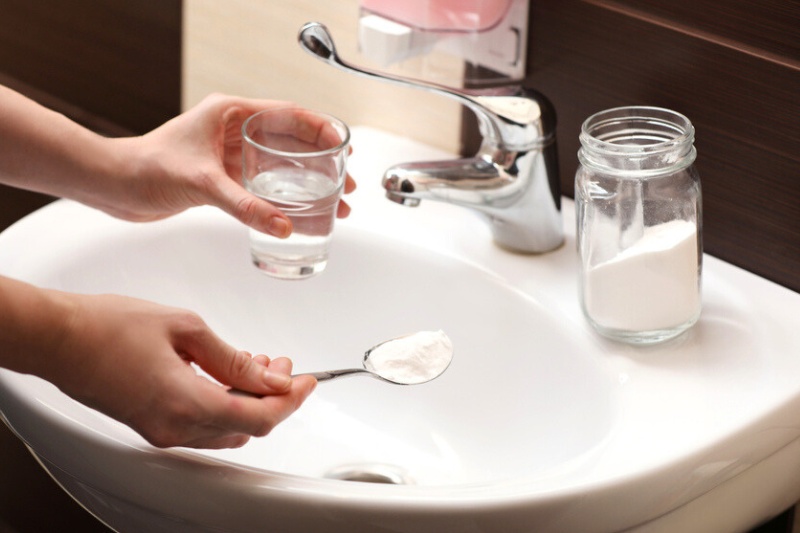
Step-by-step guide to cleaning bathroom sink drains
- Clear the area: Before you begin, remove any items around the bathroom sink to give yourself ample working space. We recommend wiping each item with a paper towel or clean cloth to remove any gunk or residue while you’re at it.
- Put on gloves: Rubber gloves will protect your hands from the potentially unpleasant task ahead. If you don’t own any, our selection of the best washing-up gloves gives you plenty of comfortable and protective options.
- Remove visible debris: Holding a paper towel or tissue, use your fingers to pinch and remove any hair, soap scum, or other visible debris from the surface of the drain. This can be disposed of in a rubbish bin or bin bag.
- Pour bicarbonate of soda down the drain: Pour about half a cup of bicarbonate of soda (also known as baking soda) down the bathroom sink drain. This serves a dual action: it will help break down grime clogging the pipes and eliminate odours.
- Add white vinegar: After the bicarbonate of soda, pour a cup of white vinegar down the drain. The chemical reaction between the bicarbonate of soda and vinegar will create a fizzing action that helps to dislodge debris and break down mineral deposits.
- Cover & leave to sit: Plug or cover the drain immediately after adding the white vinegar. This will direct the cleaning action downward instead of allowing it to escape back up into your bathroom sink. Allow the mixture to sit in the drain for about 15 to 20 minutes.
- Flush with boiling water: While waiting, boil a kettle or pot of water. Then, carefully remove the drain cover or plug and pour the boiling water down the drain. The hot water will help wash away the loosened debris down the pipes.
- Check for clogs: If the drain is still slow or clogged, you might need to use a wire coat hanger (or a drain snake) to gently dislodge and remove any remaining hair blockages. Ensure you work gently and be cautious not to damage the drain pipes.
How Do You Clean a Kitchen Sink Drain?
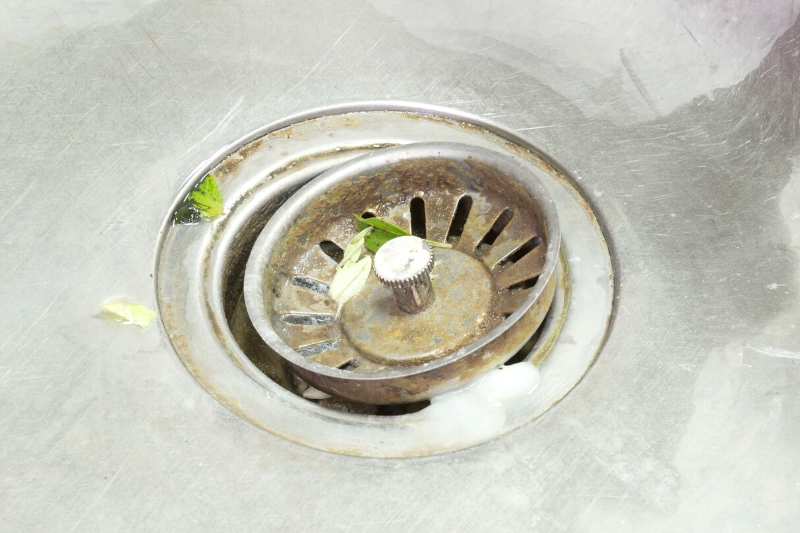
Your kitchen sink drain is most likely blocked with food particles. While using the sink for cooking and washing up, tiny bits of food can go down the drain and become trapped.
Grease, fat, and cooking oil may flow down the drain while washing dishes and solidify, restricting water flow. Excessive use or the wrong type of detergent can also cause residues to accumulate.
Although there are different culprits to blame, you can use an almost identical cleaning method to the one you use in the bathroom and still get effective results.
Here is a list of everything you need and a breakdown of the steps involved in cleaning your kitchen sink drain.
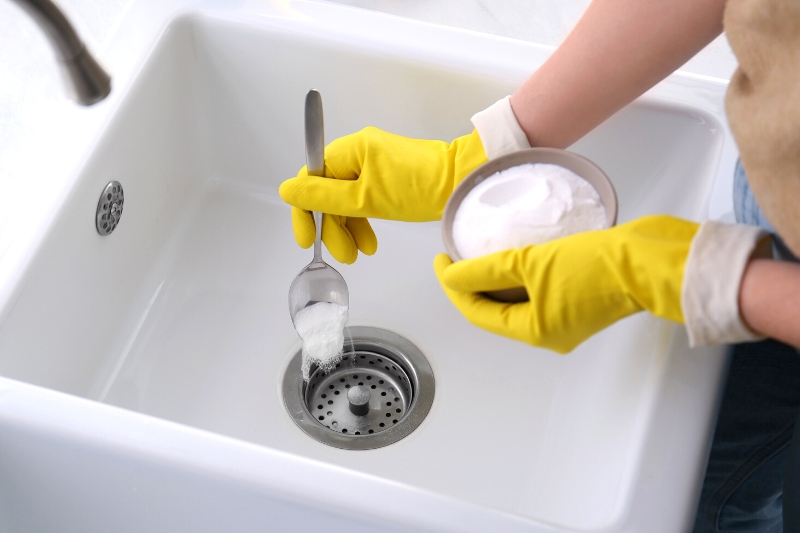
Materials you’ll need for cleaning a kitchen drain
- Rubber gloves
- Bicarbonate of soda
- White vinegar
- Boiling water
- Washing-up liquid
- Toothbrush or small brush
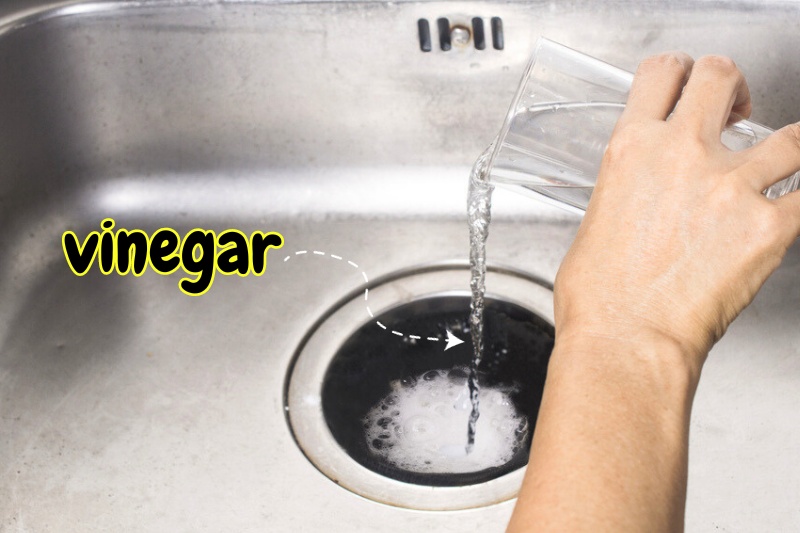
Step-by-step guide to cleaning a kitchen sink drain
- Clear the sink area: Remove any dishes, cutlery, pans, utensils, or other items from the drying rack and areas around the sink. This helps to maximise your workspace and makes it easier to get to the drain.
- Put on your rubber gloves: Always wear rubber gloves to protect your hands from the cleaning solution and any debris you pull from the sink drain. For food hygiene reasons, always use different gloves to the ones you used to clean the bathroom.
- Remove debris: Use a paper towel to remove any visible food particles, grease, or debris from the surface of the drain. Dispose of the waste in your kitchen bin. You can also go around the drain with a toothbrush to help dislodge more hard-to-reach pieces.
- Pour bicarbonate of soda: Pour half a cup of bicarbonate of soda directly down the kitchen sink drain. This useful cleaning agent will help break down grease and work to absorb and eliminate any unpleasant odours.
- Add white vinegar: Follow the bicarbonate of soda with a cup of vinegar. The two substances react together, bubbling and fizzing as carbon dioxide is produced. This fizzing action helps to further break down food particles, grease, and other buildup.
- Cover & leave to sit: Quickly cover or plug the kitchen drain after adding the vinegar to direct the chemical reaction downwards, and leave the sink alone for 15 to 20 minutes. During this time, the fizzing action will help dissolve any blockages.
- Flush with boiling water: Boil water in a kettle in preparation for when the time is up. Carefully remove the drain cover and slowly tip the entire kettle of water down the drain pipes to wash away the loosened debris.
- Scrub the drain cover: Remove the drain cover from the kitchen sink and scrub it using washing-up liquid and a toothbrush or small brush. This will remove any grime and grease that might be sticking to the cover that could fall down the plughole in the future.

Other Cleaning Hacks for Sink Drains
Bicarbonate of soda and vinegar is an excellent combination for cleaning sink drains in both the bathroom and the kitchen. However, it’s not the only effective method.
Here are several other cleaning hacks you can use instead, depending on the issue at hand:
- Regular maintenance cleans: Simply pour an entire kettle of boiling water down the drain to loosen and flush away debris and prevent buildup.
- Greasy kitchen sink drains: These can be cleaned by pouring a few drops of washing-up liquid down the drain, followed by hot water.
- Cleaning smelly sink drains: Try dissolving a tablespoon of borax substitute in warm water and pour it down the drain to break down buildup and combat nasty odours.
- Smelly bathroom sinks: Mix a few drops of essential oil (like tea tree or lavender) with water and pour it down the drain for a refreshing scent in your bathroom.
- Fully clogged sink drains: Commercial drain cleaners that contain chemicals are effective for fully clogged drains—check our guide to the best kitchen sink unblockers.
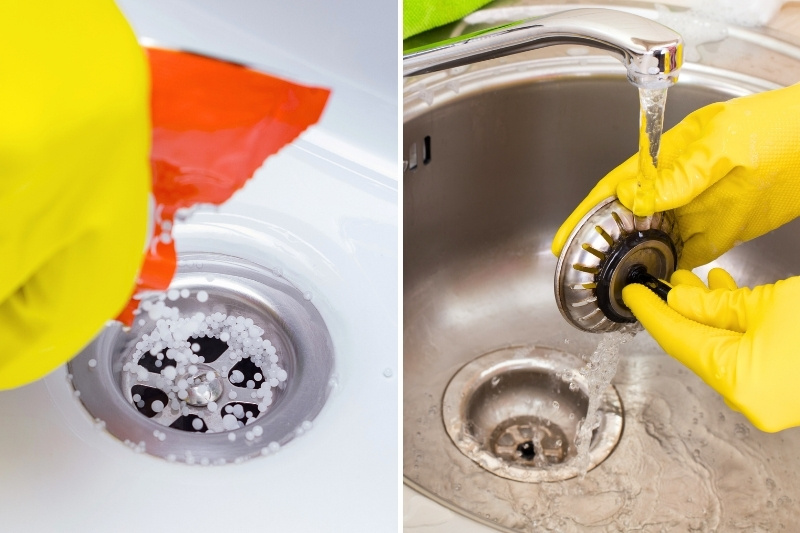
These cleaning hacks can help you maintain clean and odour-free sink drains with minimal effort. But remember, regular maintenance is key to preventing stubborn clogs and maintaining a healthy plumbing system.
It’s a good idea to use hot water to flush the drain once or twice a week and do thorough cleaning (using our bicarb and vinegar method) every 1 to 2 weeks.
Additionally, using sink strainers or drain covers can help prevent debris from entering the drain, reduce the frequency of deep cleanings, and make this unpleasant task a little easier.

Hannah has a passion for cleaning. She worked her way around Australia by cleaning hostels in exchange for free accommodation and used her cleaning skills to bag a job as a chalet host for a luxury ski company in France.
